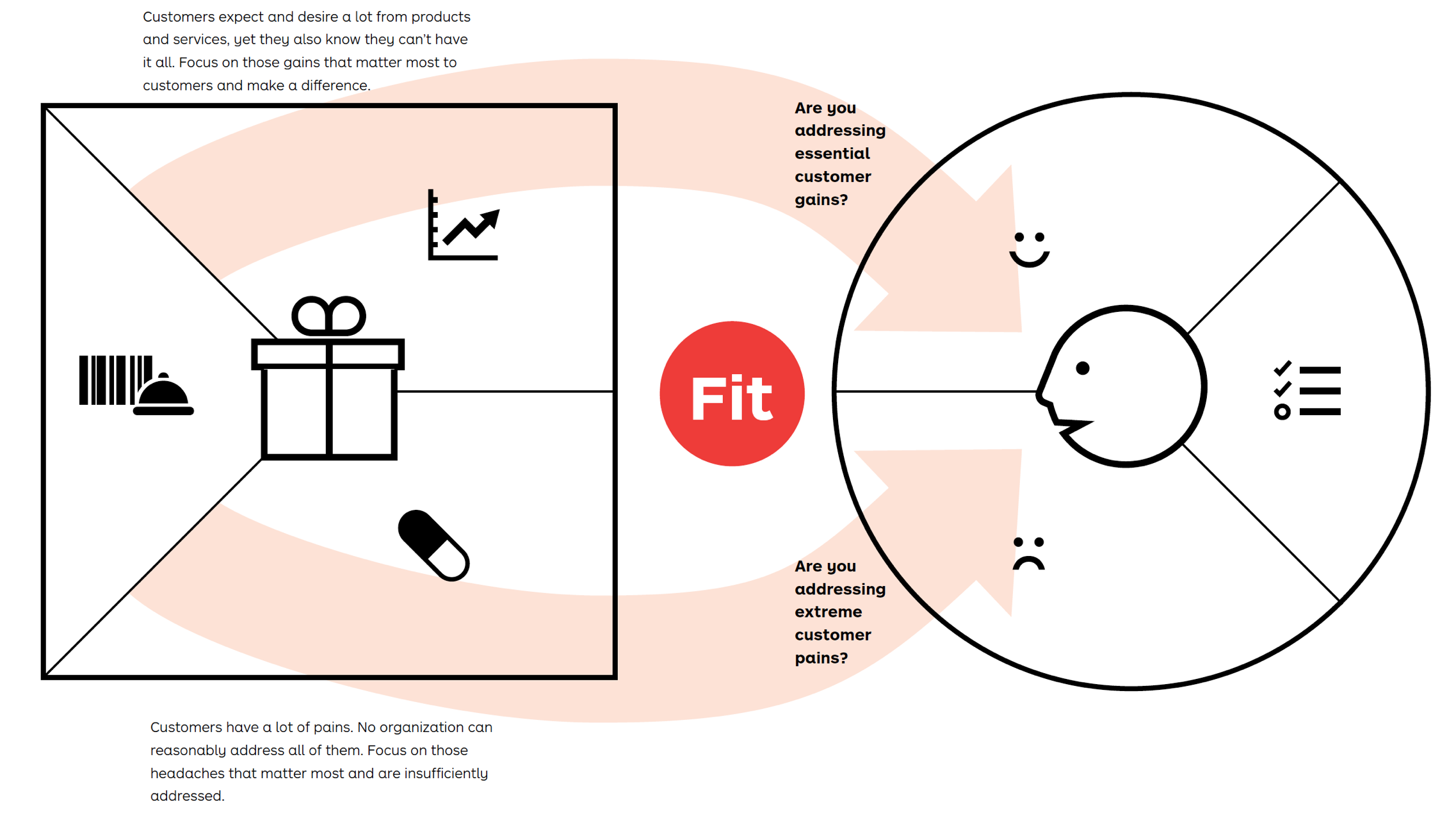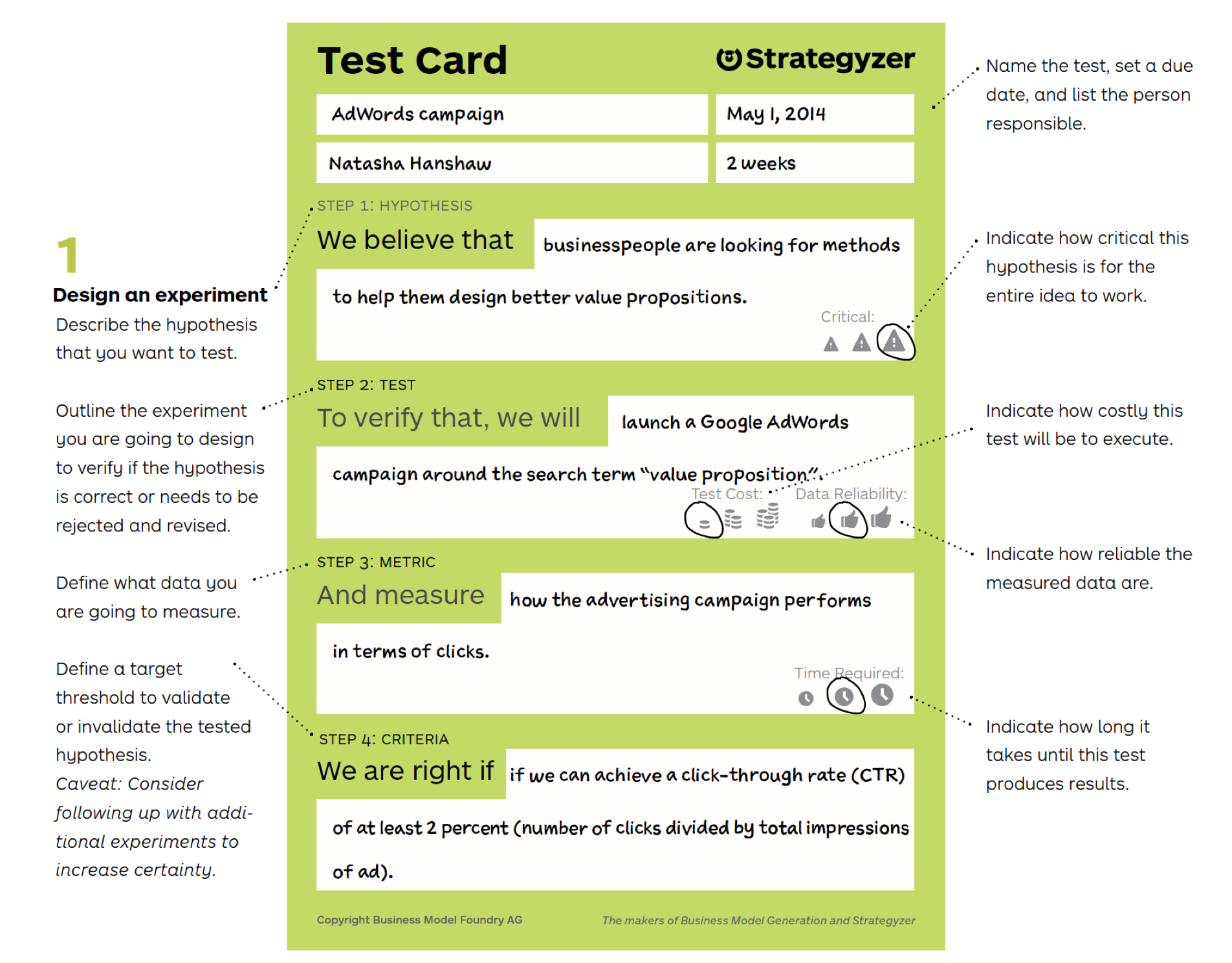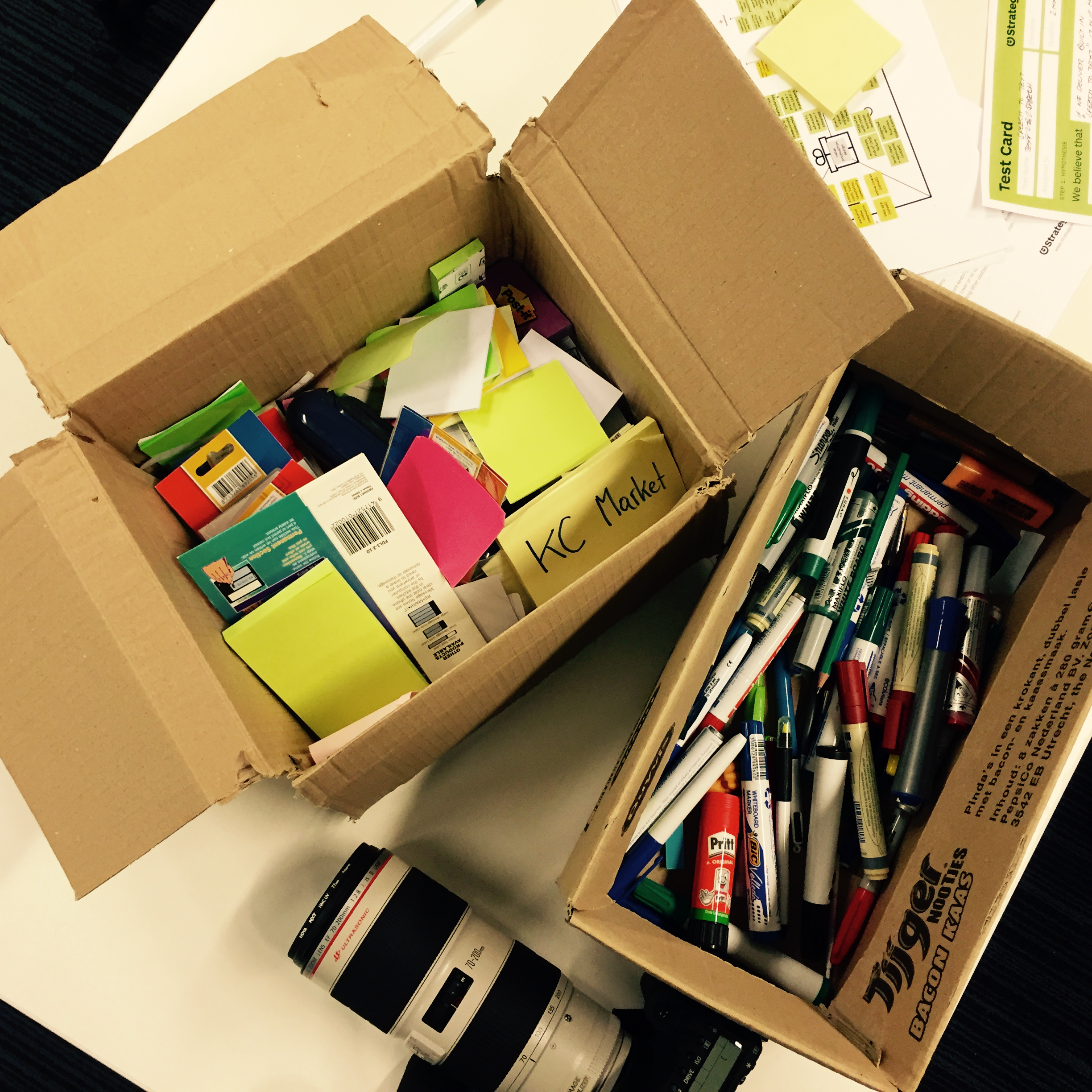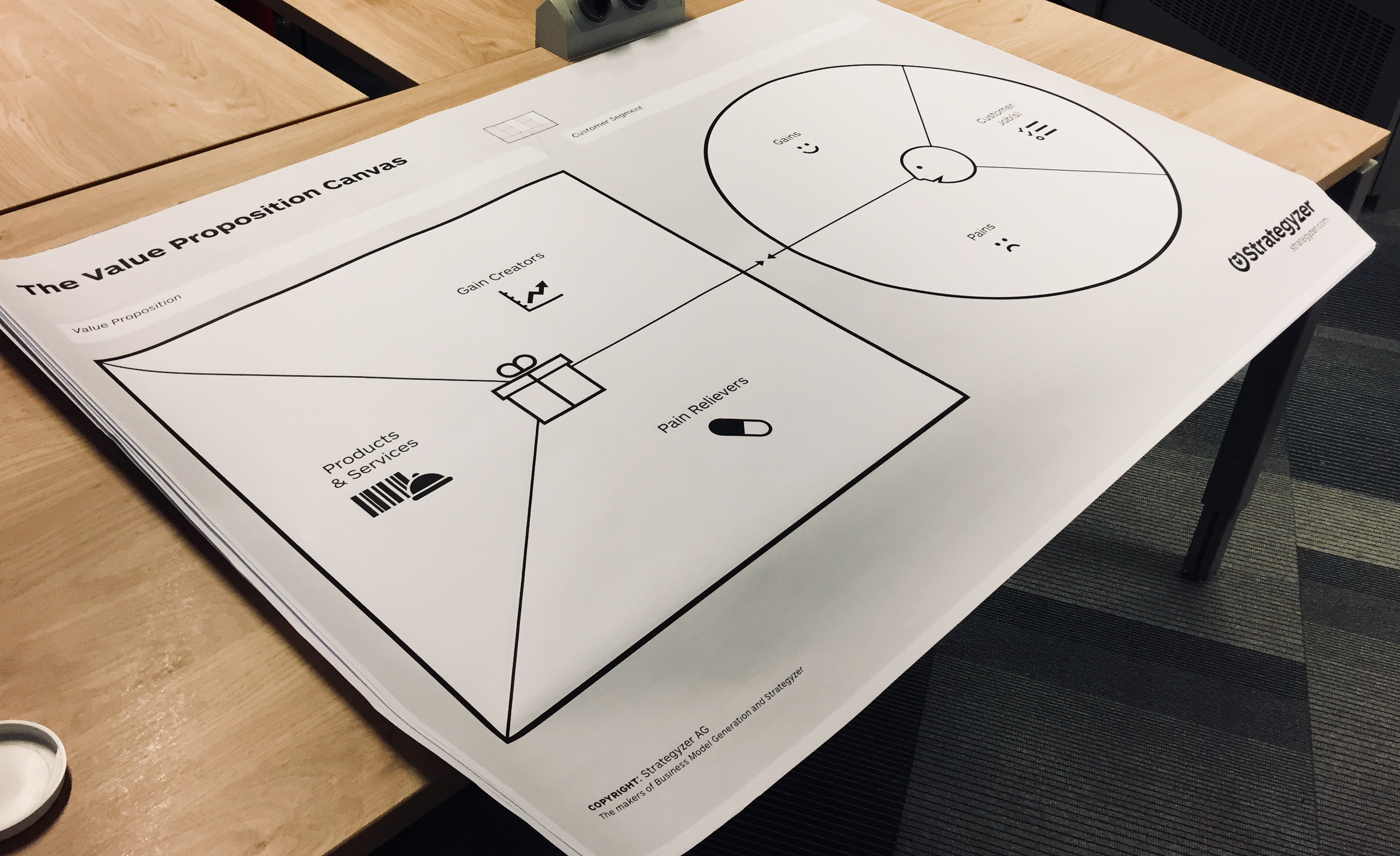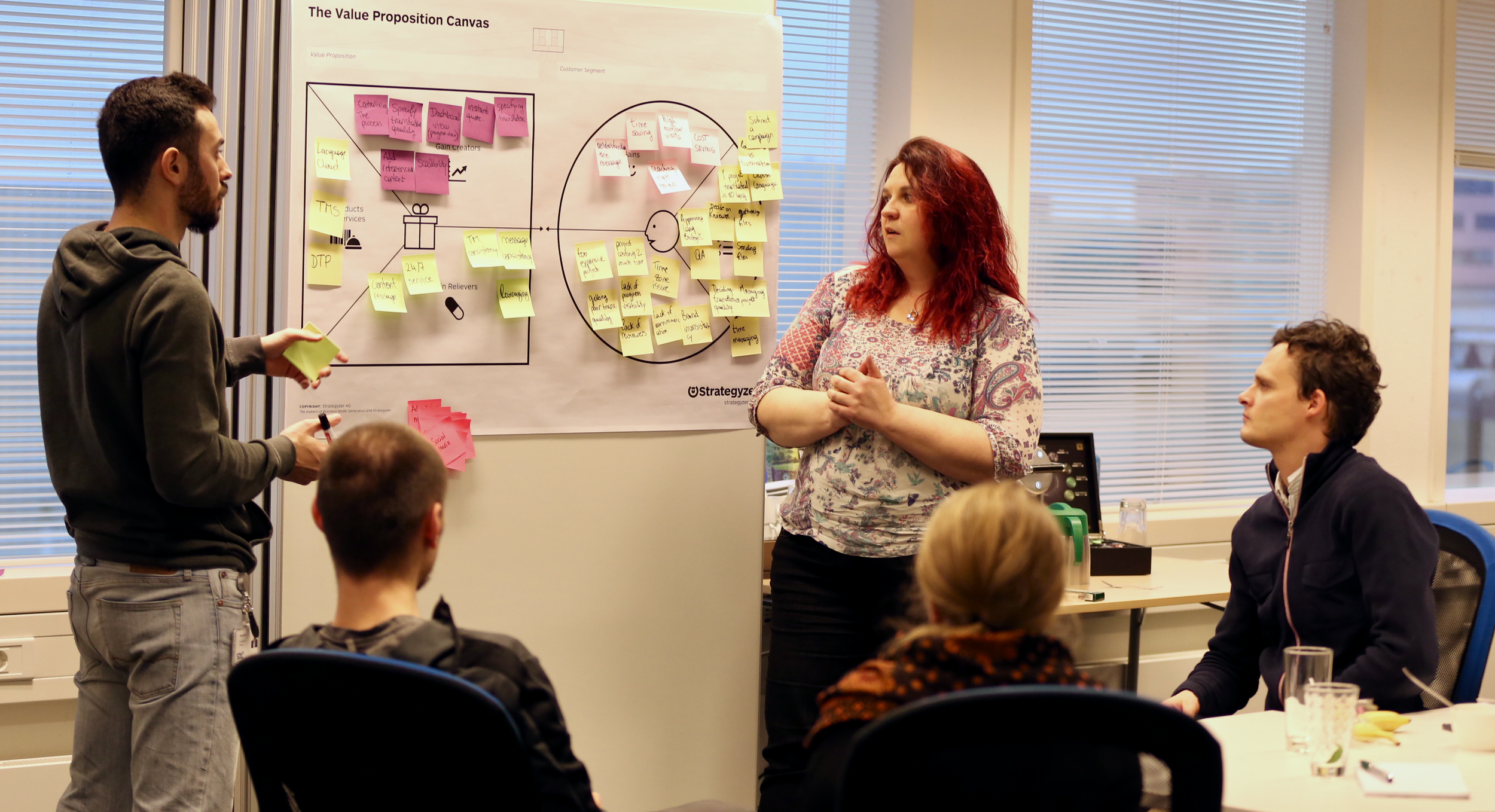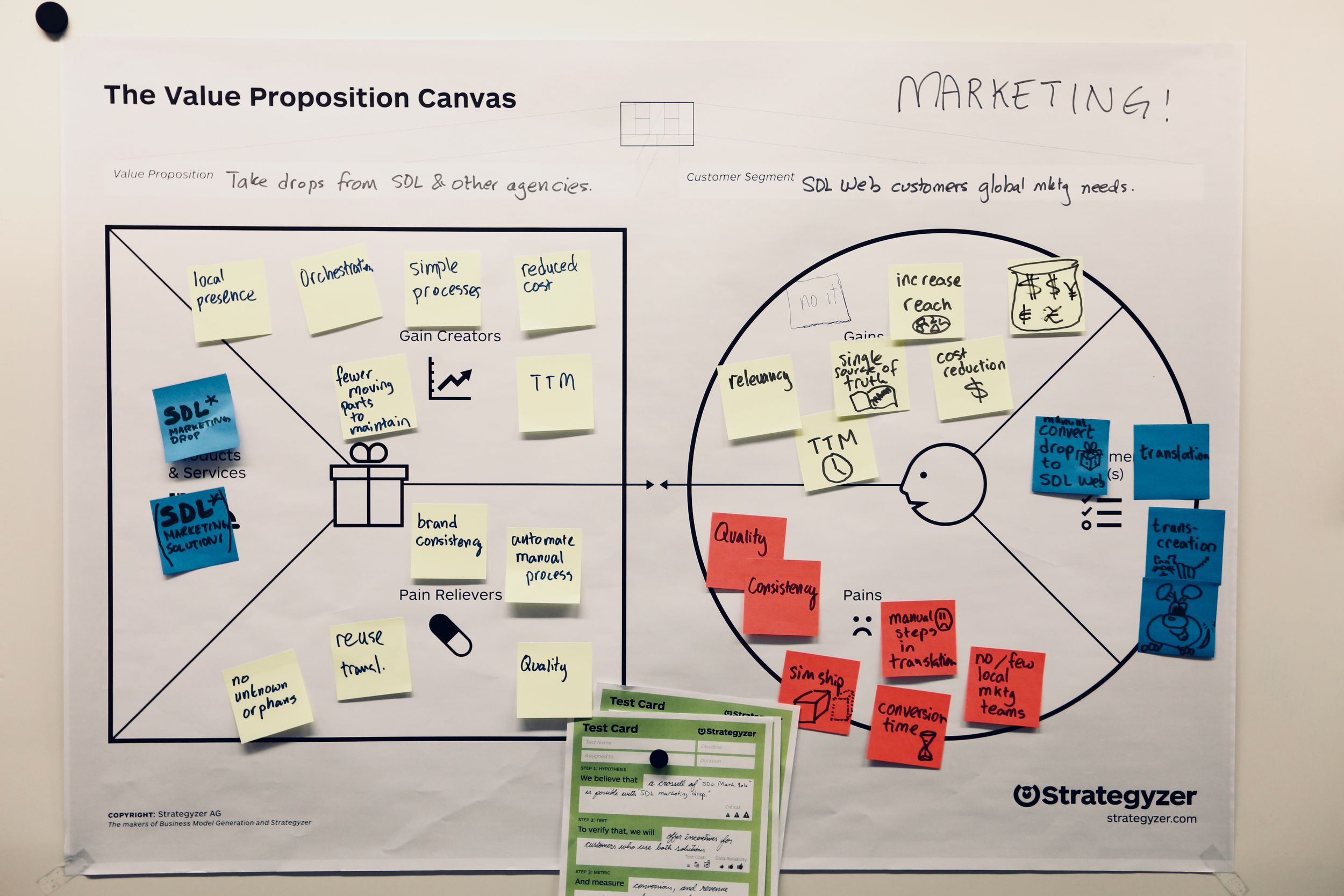Problem and Context
The implementation of a multi-stage product lifecycle process at SDL brought the need for design thinking exercises and workshop facilitation of incubation projects. Especially the individuals and innovation teams who come up with new and innovative ideas needed help to formulate, frame and validate those ideas successfully.
Product Lifecycle Framework
Any idea for a new product could now be submitted into this product lifecycle and after an initial general review, idea owners and teams had to collect and present evidence that their idea was actually addressing an existing problem out there and that their intended solution came with a sound value proposition. If successful they would get “seed funding” to build an minimum viable product (MVP) or a proof of concept (POC) to further test the product-market-fit or a new technology. In order to support this early and lean validation of innovation ideas, I developed a value proposition design workshop format and trained the user experience design team to facilitate it throughout the organization.
Workshop Format
The workshop was oriented at the value proposition design process and book by Strategyzer. It’s designed to walk a cross functional group, broken down into several team(s), through the entire process in about 3 hours. The first part focuses on filling out the value proposition canvas, review the fit, and declare assumptions. The second part addresses the formulation of hypothesis, how to design a MVP, and how to design experiments for validation.
These are the steps in detail:
Define Customer Profile
After a general introduction to all participants and splitting the entire group into several smaller teams, each team starts filling in the various areas of the value proposition canvas. The group begins with the customer profile on the right of the canvas. The group selects a specific customer profile they want to address and brainstorms and collects their current customer jobs, current pains, and expected gains. Best way to capture is in form of post-it notes directly on the canvas. Complementary trigger questions help the group getting started. Ones all areas are covered, it helps to prioritize each area to get a relative priority of each post-it. This triggers a good conversation and knowledge sharing about the anticipated customer, either based on assumptions or on real knowledge (e.g. through customer facing experts in the team).
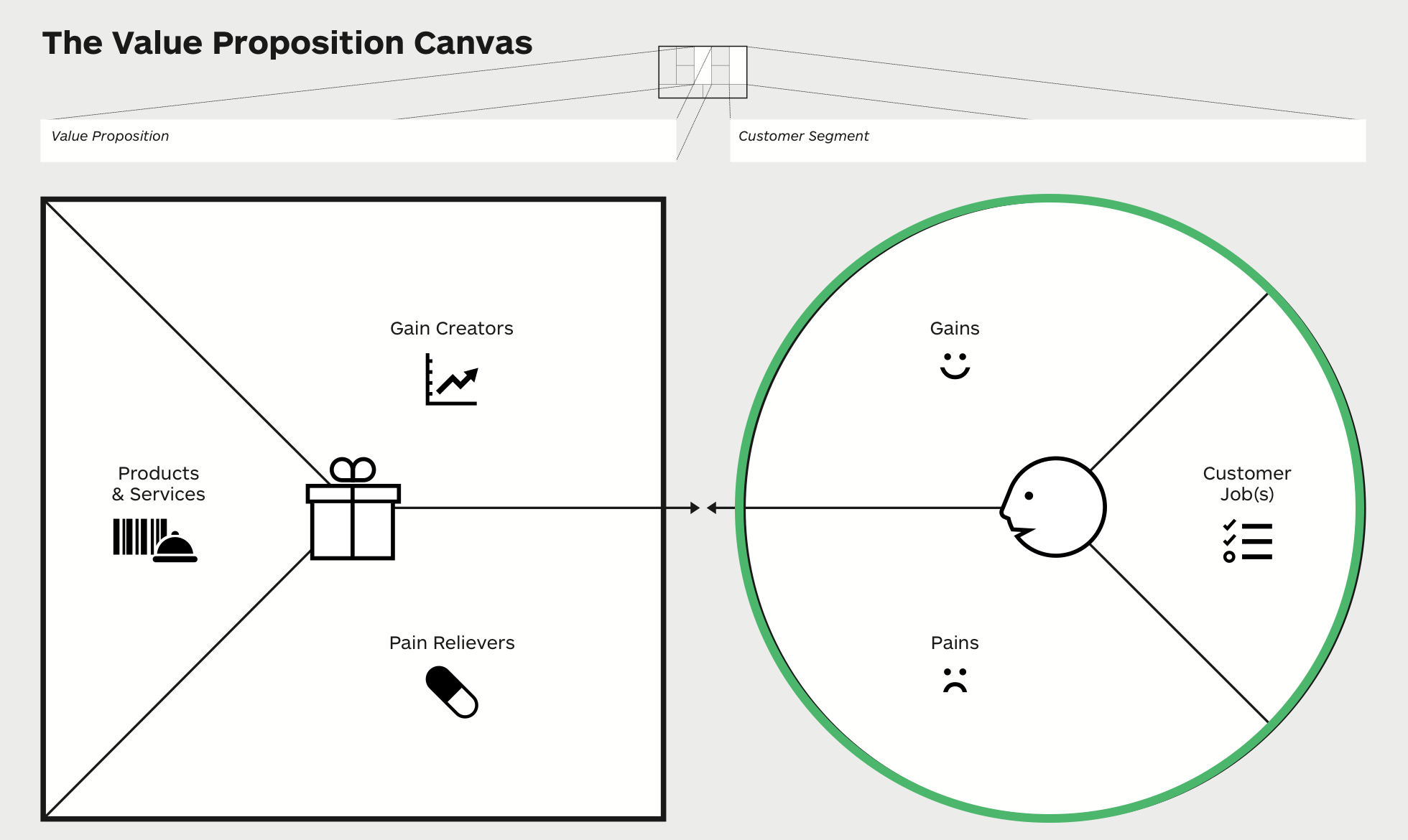
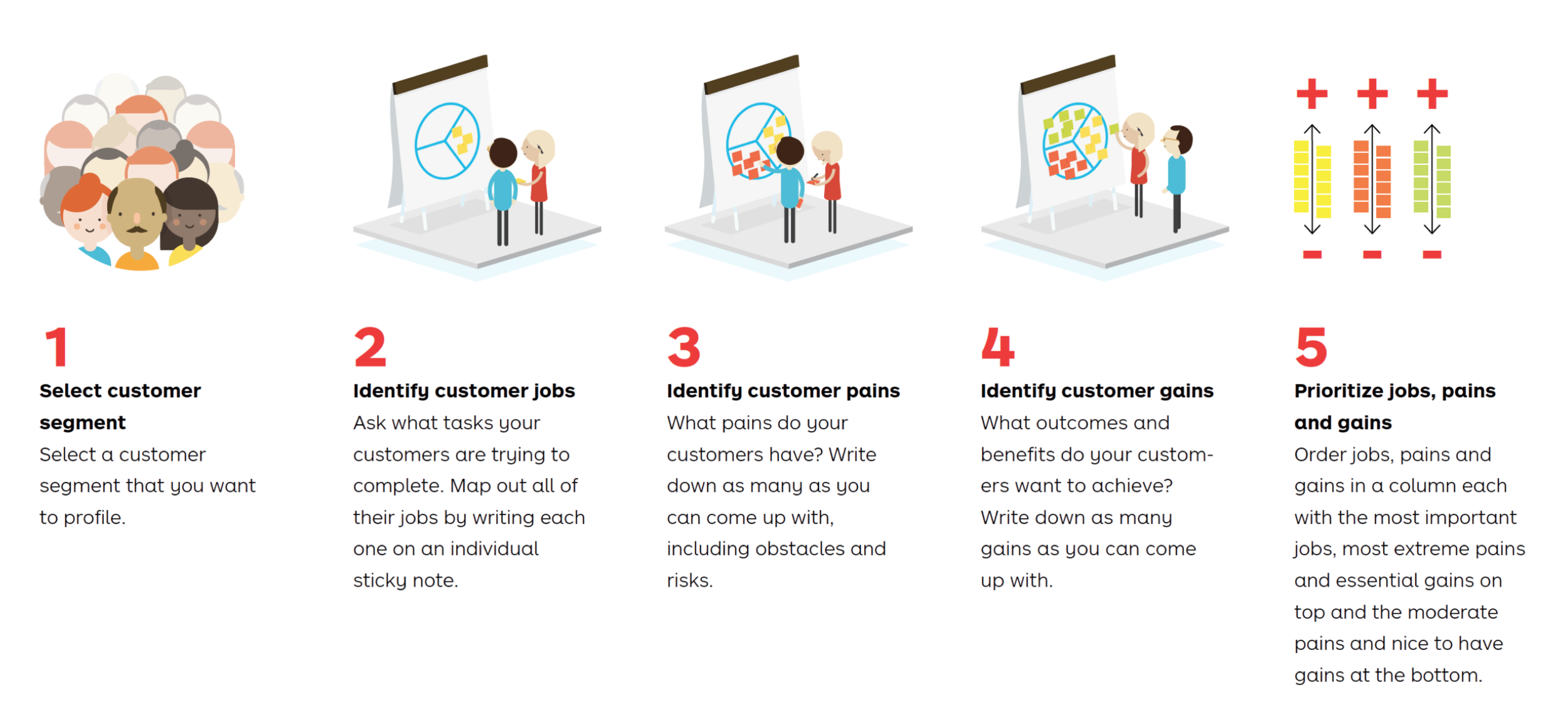
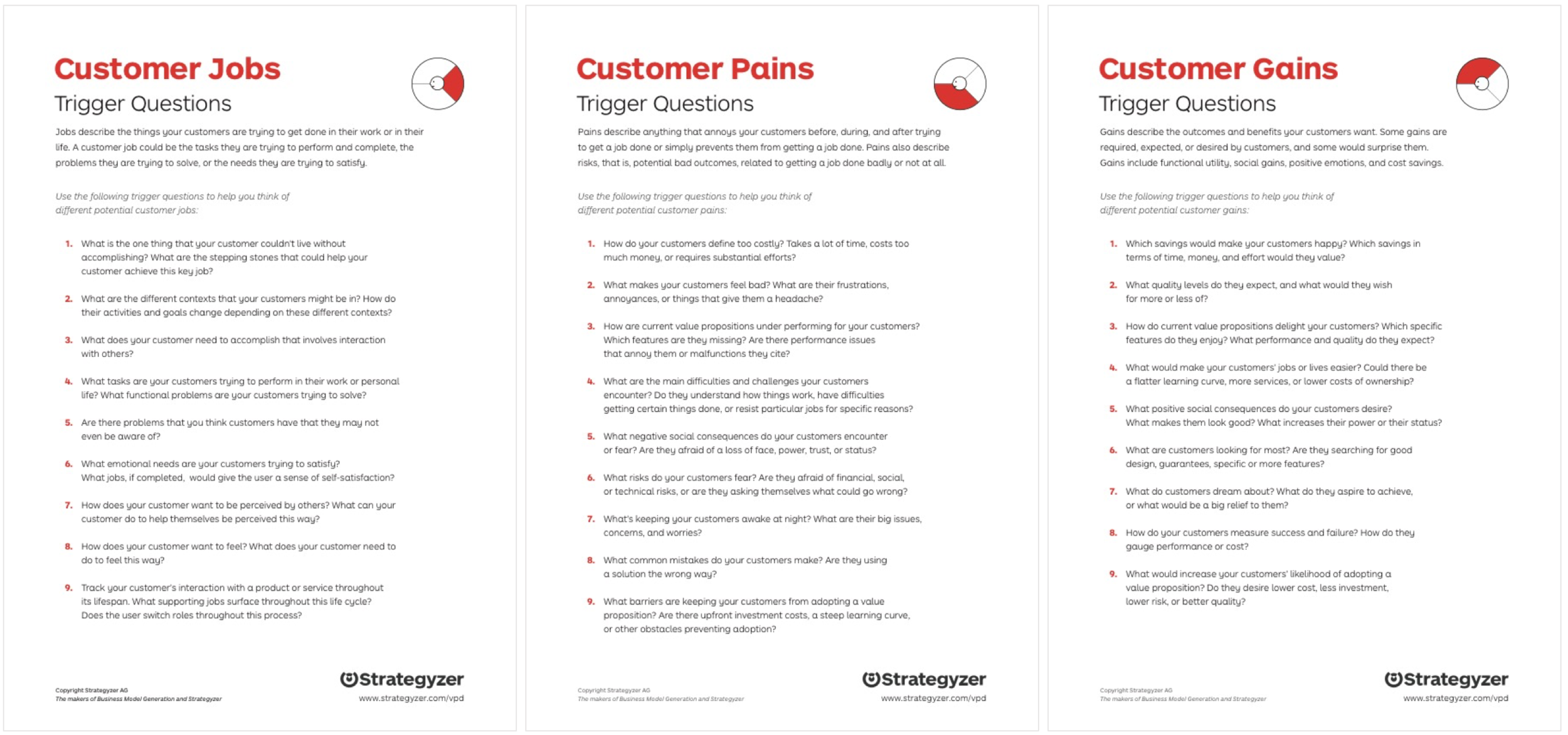
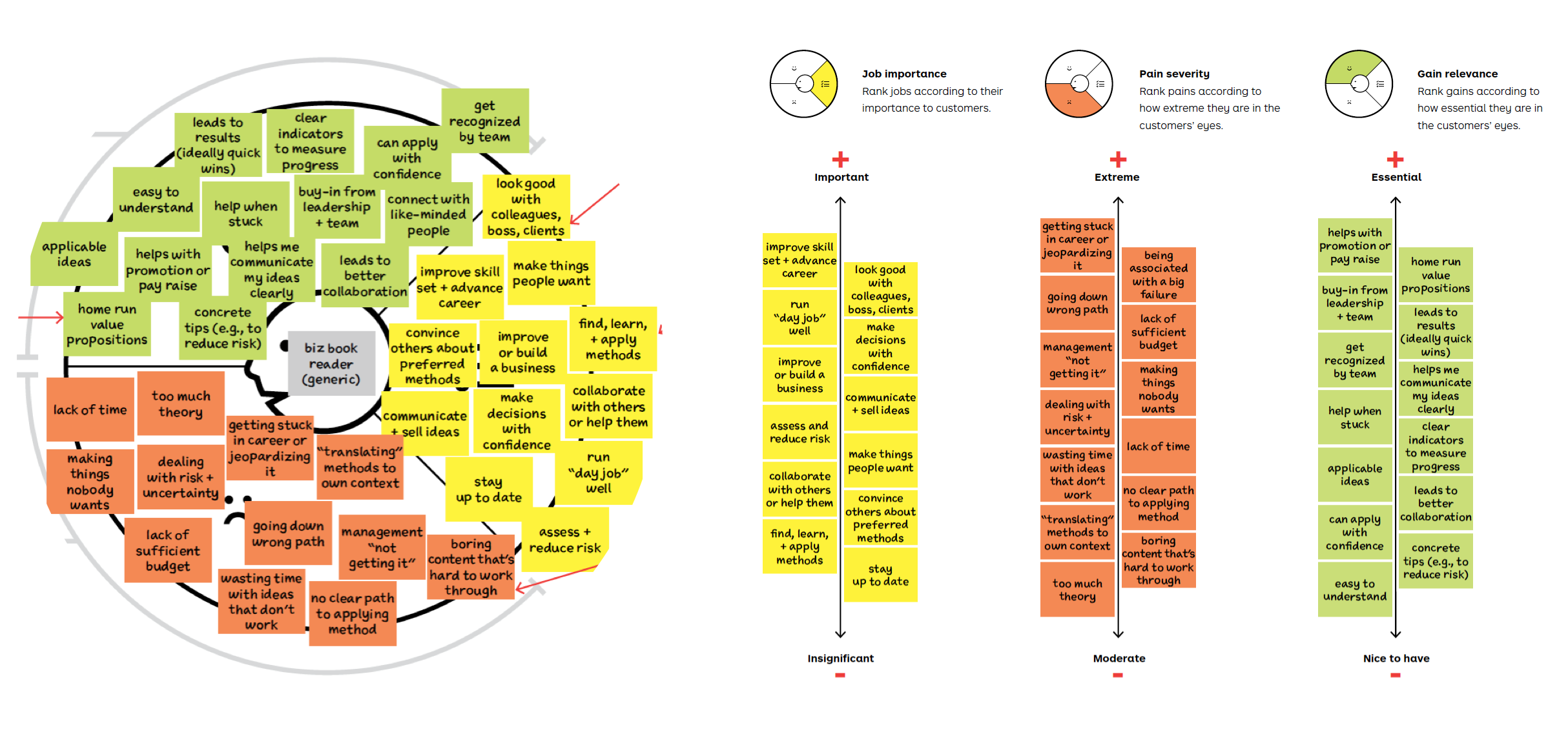
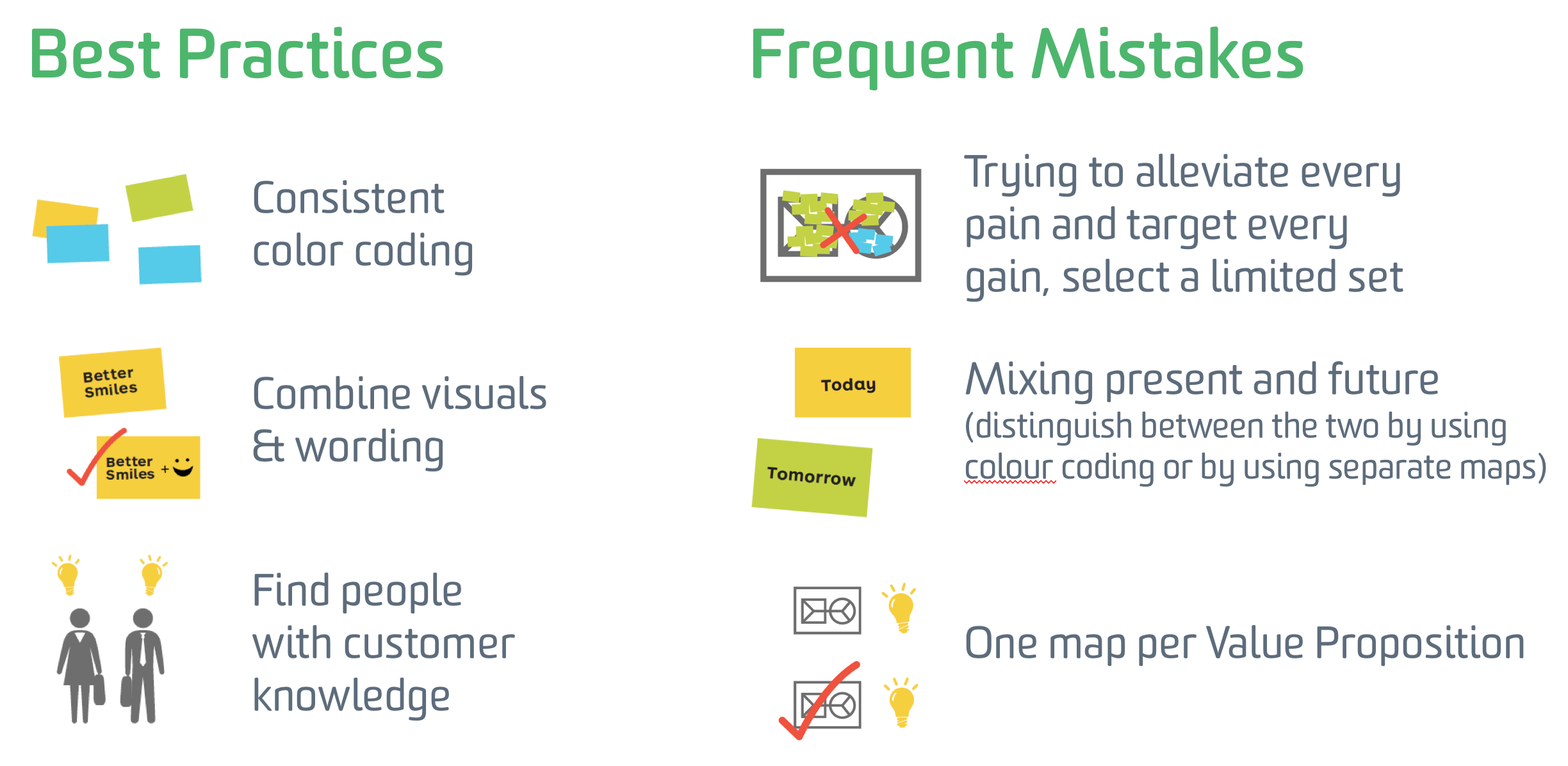
Define Value Map
After the customer profile is completed, the group shifts focus to the value map. Here the group captures all products and services that are part of the current value proposition and based on those, identifies pain relievers and gain creators for customers. A prioritization of each area finalizes and completes the value proposition canvas.
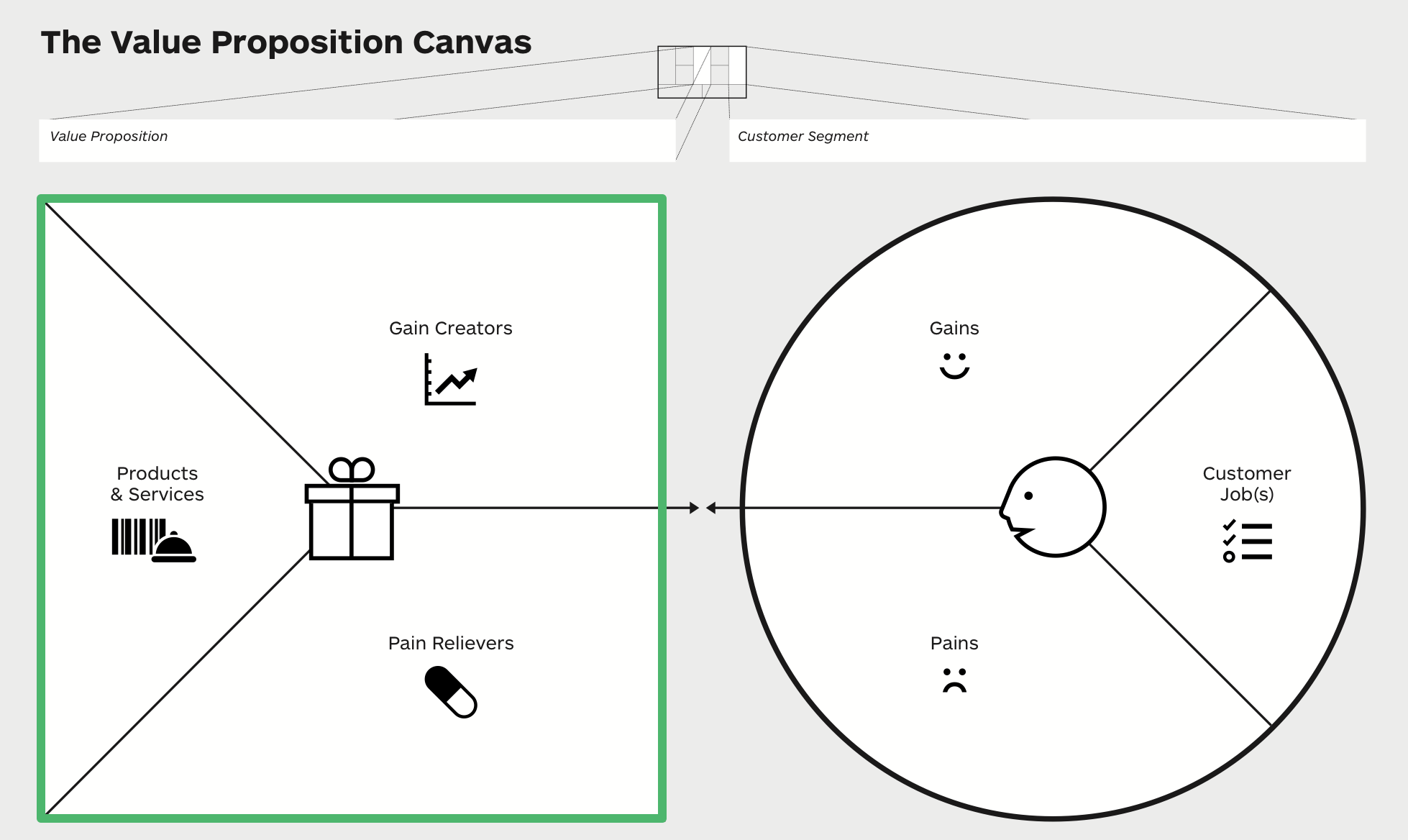

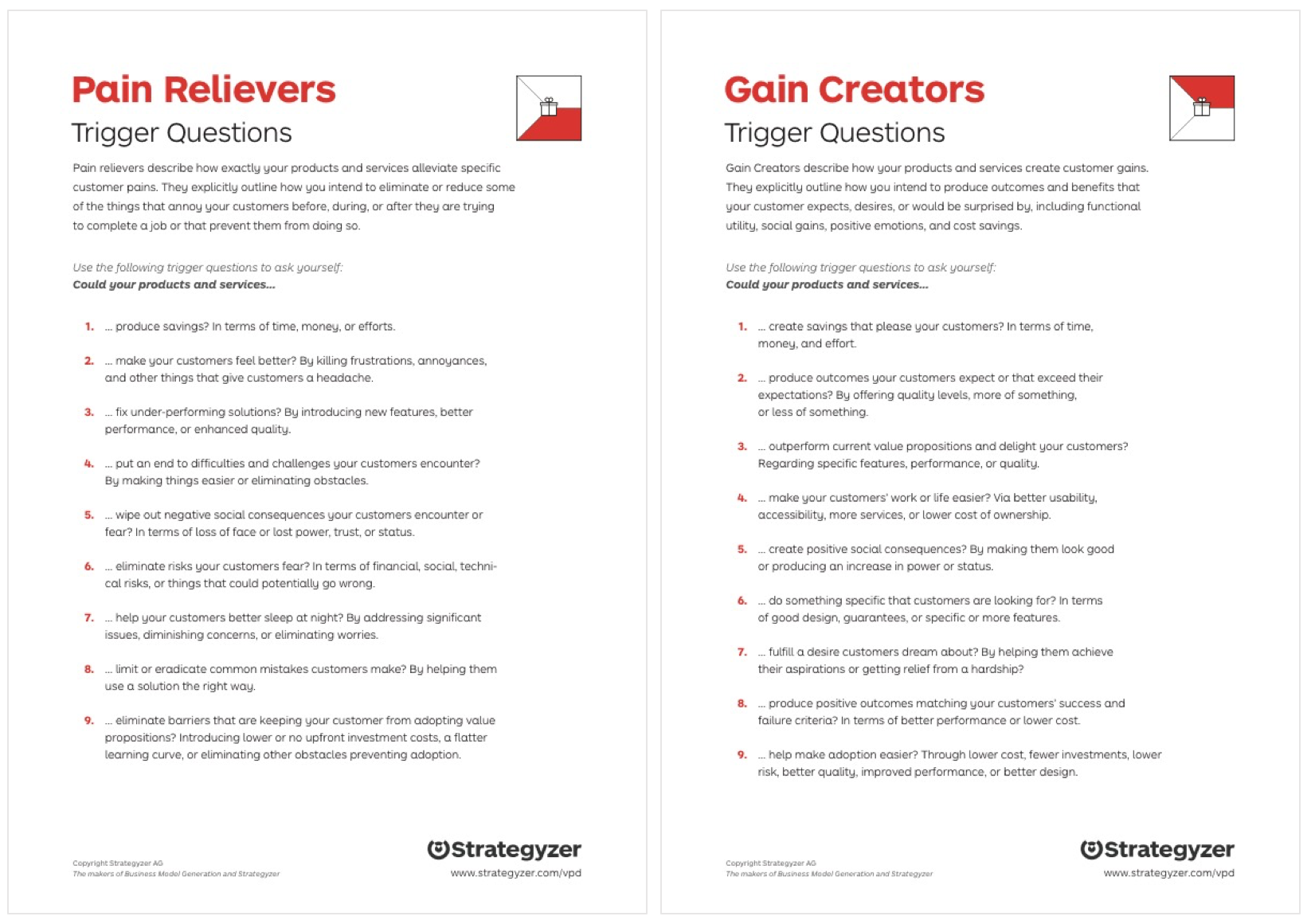
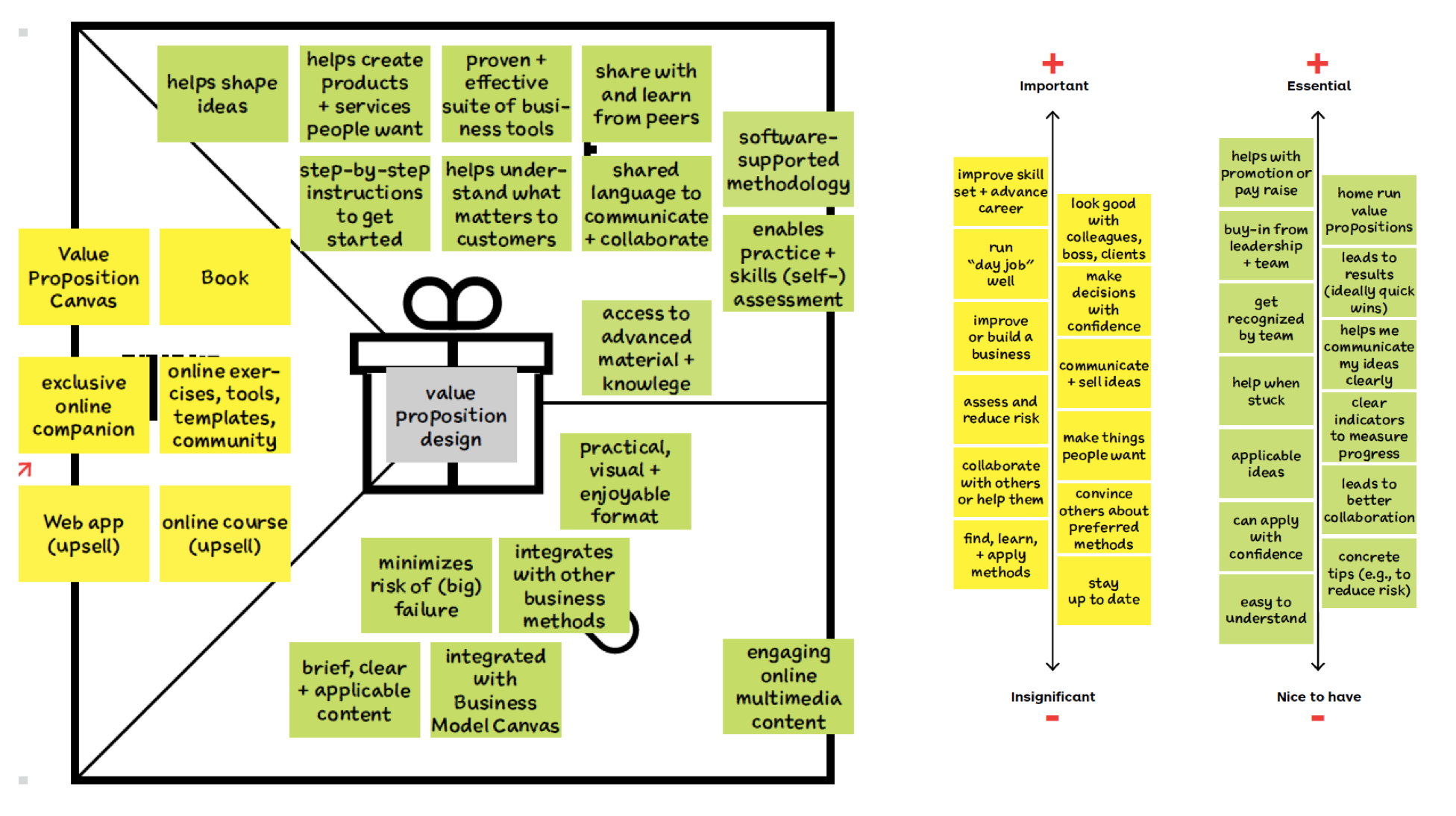
Review Value Prop Fit: Brainstorm Solutions & Declare Assumptions
The completed value proposition canvas now allows to review if there is a fit between both sides. Are products and services addressing essential customer gains and pains? Where are gaps? Are there opportunities to fill those gaps? How? This is a really exciting part of the workshop because here the groups start brainstorming solutions based on the previous work and the completed map. They capture the solutions in form of written-down assumptions. Assumptions should be sorted by risk, as you would want to test your riskiest assumptions first.
Formulate Testable Hypothesis & Design Experiments
Testing those riskiest assumptions can be done by formulating hypothesis and design related experiments. A great tool for that are the free test cards provided by Strategyzer on their website. The cards provide the group with a template to formulate their test hypothesis and define in what way and by what metrics the hypothesis can be tested. It’s a great way for teams to train and practice outcome driven thinking.
MVP Design Studio
As most hypothesis and related experiments involve some kind of prototype development and testing, the last step of the workshop is dedicated to a design studio exercise in which every group, or every individual, comes up with a quick design for a minimum viable product (or prototype). Most important to highlight here is that the MVP should address the intended experiments, so the hypothesis and the test metrics.
MVP’s are for learning – nothing else.
Present Results
The workshop closes with each group presenting their results to the rest, which ensures knowledge sharing and collaborative agreement on next steps and follow ups.
Outcomes
The outcome of such a workshop is a completed value proposition canvas – informing about a target customer segment and the internal value map, including gaps and opportunities for new solutions. Ideas for new solutions come in form of assumptions, related experiments, and initial solution designs (MVP). From here it should be simple to prioritize the experiments, develop the relevant MVP, and start executing the experiments. The experiment results will bring the necessary evidence and indicates if the proposed new solution is viable and should be developed further or not.
Value Proposition Design Workshop Talk
I spoke about this tool and how to use it in a workshop format on deign and product meetups. These are the slides, they contain some examples and try to be as actionable as possible.




